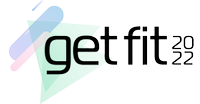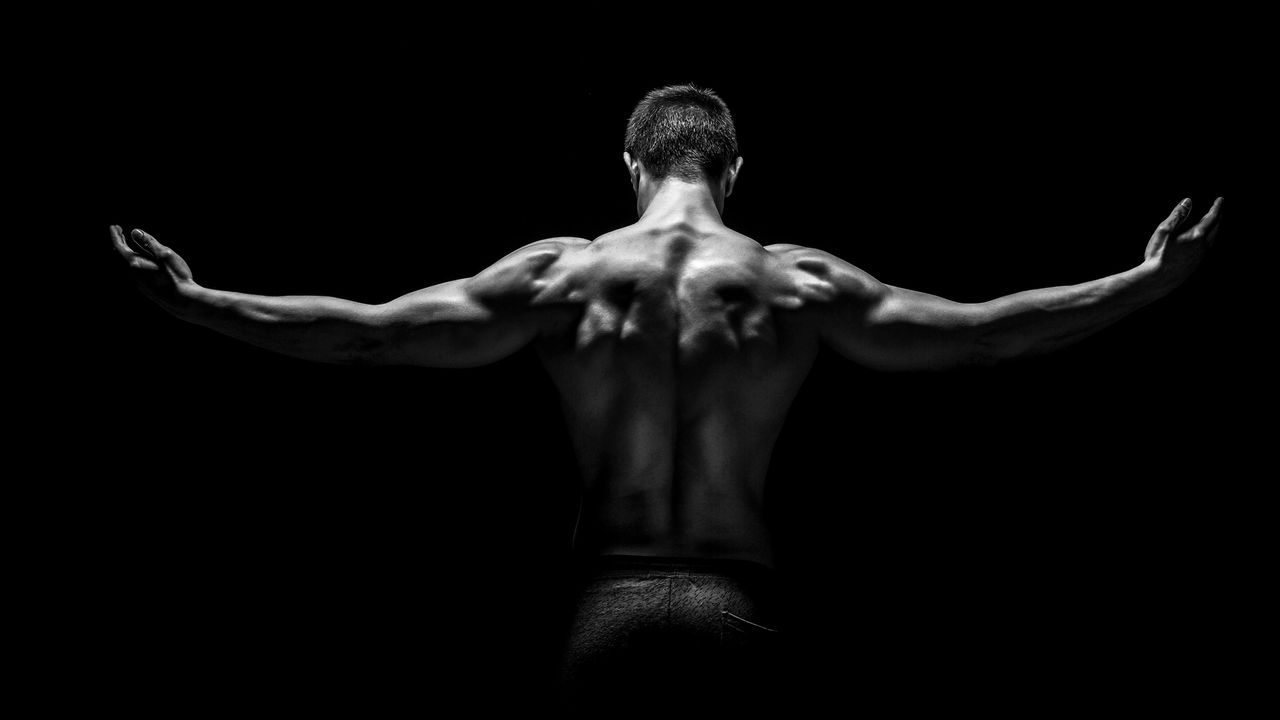


The best defence is a good offence, as the adage goes, and if you're suffering from niggling pain in your lower back, the best way to address the situation is to do lower back workouts. There are many lower back exercises to try but the three we'll recommend here will help strengthen the torso the most.
Having a strong lower back can help you tackle a lot of health issues down the line. Naturally, you might also want to include the best back exercises and best lats exercises in your workout routine so your whole back is as strong as it can be; your future self will thank you for looking after the rear side of your upper body.
You can also try these seven bodyweight exercises to ease back pain or a home workout for a strong back that uses no equipment whatsoever (apart from a towel).
PLEASE NOTE: This article is not meant to be medical advice. Don't try any exercises, lower back or otherwise, if you're suffering from acute back pain or other medical conditions that might affect your workout performance. If you're concerned, it's best to talk to a medical professional first before you attempt any lower back workouts.
How do lower back muscles work?
To properly train a muscle, it’s always a good idea to understand both what it’s designed for and what your end goal is. Let’s address the latter first.
This article mainly focuses on how to train your lower back to boost your compound lifts (specifically the squat and deadlift). Why? Because being able to do these help gain strength, muscle and it can also help you feel better about your physique which is great for mental health.
That brings us on to what the lower back was actually designed for: to resist movement.
Sign up to the T3 newsletter for smarter living straight to your inbox
Get all the latest news, reviews, deals and buying guides on gorgeous tech, home and active products from the T3 experts
Don’t believe me? Take this simple test:
- Stand up in your normal posture and feel your lower back. Notice how it isn’t flexed?
- Now bend forward at the waist. You should immediately feel your spinal erectors (the long muscles that extend vertically up the length of the back on each side of the spine) tense.
- Now stand straight again and bend slightly backwards from the waist. Notice how the spinal erectors turn off completely? That’s called “hyperextension”. It places your back in an extremely disadvantaged position and I generally recommend not doing it for elongated periods of time.
A final note on spinal erectors: don’t be fooled by the diminutive size of these muscles. They’re absolutely key in your quest for gaining both strength and muscle.
3 reasons why you need a strong lower back
While we all know the benefits of having strong abs, we’re often guilty of ignoring their hard-working cousin the spinal erectors.
That’s a huge mistake because the lower back helps to stabilise the spine and lock it in place when you’re moving large weights. That means we should care about it for three main reasons:
- Muscle - Gym rats should care about the lower back because it means you can lift heavier. This builds strength, which equates to more muscle mass over the long term and ultimately improves aesthetics.
- Performance - Athletes should pay attention because the more forcefully you can lock your spine in place the more power you can achieve through explosive hip movement.
- Injury prevention - Strong spinal erectors are a key component of injury avoidance.
Now, let's get right into exercising!
Top 3 lower back exercises to build a strong and functional torso
1. GHD Back Extensions
Why should you try it: You'll feel your glutes and spinal erectors far more on a GHD than a roman chair when performing unweighted extensions.
How to: Set up the foot and hip pads so that they’re in line with each other. Adjust the footpad so that the top of your hips are off the pad. This facilitates a greater range of motion without going into flexion. Maintain a neutral spine throughout the entire movement.
Initiate the concentric by squeezing your glutes and driving your hips into the pad as opposed to flexing your lumbar spine. This will train hip extension and reinforce that movement. Make sure your spine is neutral (head facing forward) all the way through the movement.
2. Good mornings
Why should you try it: This is my personal favourite exercise when it comes to strengthening the entire posterior chain. This, more than anything else, has done wonders for my deadlift.
How to: Take a hip-width stance with the bar placed across the upper back. You should have a slight flex in the knees. Initiate the movement by breaking at the hips and forcefully pushing the butt back.
Descend until the chest is parallel to the floor whilst maintaining a neutral spine throughout. Your heels must remain flat throughout the movement. Initiate the concentric by simultaneously squeezing your glutes hard and flexing your hamstrings to return to an upright position.
3. 45 Degree Deadlift
Why should you try it: Deadlift extraordinaire Pete Rubish credits this exercise more than any other for building his 925-pound deadlift. You’ll see why after you've finished with your first set.
How to: The hip pad should cover the top of the hips. This will limit your range of movement and engage more of the lumbar spine as opposed to the hamstrings. Take an overhand grip on the barbell.
Initiate the movement by flexing hard at the glutes and hamstrings, maintaining a neutral spine throughout the movement. Return the bar to the floor and pause between reps. Do not “touch and go” with these.
Best lower back exercises: Reps and sets
The reps and sets you’re looking for here are anywhere between 2 to 5 sets of anywhere between 8 to 20 reps. Always train your spinal erectors at the end of your lower body workout.
Repeat after me: “I am not an elite level powerlifter and therefore do not perform good mornings for less than eight reps”.
Unless you’re a seriously experienced lifter whose squat and deadlift are the envy of the gym and have performed the exercises above many times over then that statement applies to you. Training your lower back can go very south, very fast if you’re not careful.
The Equipment Needed To Build A Strong Torso
A good quality barbell and squat rack. You should view these as an investment. Your future self will thank you for it.
Resistance bands are essential if you’re only just beginning to train your lower back and can be used to overload the top of the movement.
If you want to load the good morning to a significant weight then it’s worth purchasing a safety squat or cambered barbell. They’ll also pay dividends in other movements.
The basic diet to build a strong lower back
I sincerely hope that you’re following a weight training program that places an emphasis on progressively overloading the compound lifts. If that’s the case then your diet should follow the basic guidelines below:
Your diet should be built on a foundation of healthy whole foods and a balanced macronutrient intake that emphasises healthy protein sources.
You should be in a daily caloric surplus of between 200 and 500. Begin at the lower end of this range and increase when necessary.
The “dirty bulk” is not your friend.
Your protein intake should hover around the 1.5 grams per pound of lean bodyweight mark.
Take advantage of your post-workout window by consuming a whey protein shake immediately following your workout.
A balanced meal of protein, carbohydrates and fats within an hour of your workout will boost muscle gain and recovery.
Your spinal erectors are a relatively small muscle group and therefore don’t require any significant caloric supplementation when added to your lower body days.
This feature is part of T3's Get Fit 2022 campaign. We’ll be bringing you a wealth of guides, features, deals and news to help you get healthy, fit and ready for anything the new year can throw at you. Whether you’re a newcomer to fitness or someone with a passion for it, we’ll bring you all the best workouts, diet advice and gear to set you on the right track.

Tom’s been mad about health and fitness for longer than he can remember. His training journey has taken him from long-distance running and powerlifting to CrossFit and gymnastics. His proudest fitness achievement is running (and finishing) a marathon with no specific preparation. Tom also boxed recreationally for over 3 years at London’s oldest boxing gym and continued during his time in the army. He loves writing about everything training and nutrition-related.
-
 These in-ear monitors perfectly match my first-ever hi-res audio player
These in-ear monitors perfectly match my first-ever hi-res audio playerAre Activo's somewhat affordable IEMs a slam dunk?
By Max Freeman-Mills Published
-
 Apple AirPods Pro 2 just unlocked a powerful health upgrade in the UK – and it could change lives
Apple AirPods Pro 2 just unlocked a powerful health upgrade in the UK – and it could change livesThe new Hearing Aid feature drops for AirPods Pro 2 users in the UK
By Matt Kollat Published
-
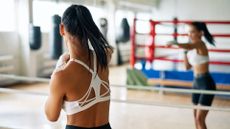 20-minute full-body HIIT workout to burn fat and boost your metabolism
20-minute full-body HIIT workout to burn fat and boost your metabolismYou won't need any equipment for this T3-exclusive “Box ‘n Burn” shadowboxing follow-along workout
By Matt Kollat Last updated
-
 Reduce stress, get strong and burn fat with this 20-minute punch bag workout
Reduce stress, get strong and burn fat with this 20-minute punch bag workoutRelieve stress and get fit in the process with this follow-along workout from a top boxing coach
By Matt Kollat Published
-
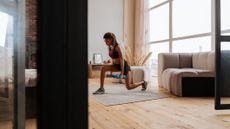 This home workout combines HIIT and strength training – burn fat and build muscle in 20 minutes
This home workout combines HIIT and strength training – burn fat and build muscle in 20 minutesSlim down at home with this fast-paced dumbbell HIIT workout
By Matt Kollat Last updated
-
 Try this 2-minute six-pack workout and train the most neglected part of your abs
Try this 2-minute six-pack workout and train the most neglected part of your absFast, efficient and fun; this ab workout has it all!
By Matt Kollat Last updated
-
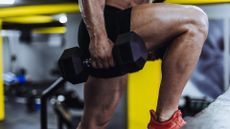 Work the glutes, quads and calves with this 5-move leg day workout – you'll only need 2 dumbbell
Work the glutes, quads and calves with this 5-move leg day workout – you'll only need 2 dumbbellWork your whole lower body, from glutes to calves, with the smallest home weight
By Matt Kollat Last updated
-
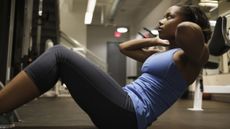 15-minute low-impact full-body workout to burn fat and improve metabolism
15-minute low-impact full-body workout to burn fat and improve metabolismYour body (and two chairs) is the only equipment you'll need for this workout
By Matt Kollat Last updated
-
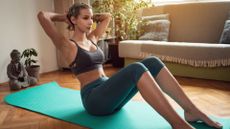 Sculpt six-pack abs with this quick 4-move core workout – no equipment required
Sculpt six-pack abs with this quick 4-move core workout – no equipment requiredGet your abs ready for this fast and furious core workout – no equipment required!
By Matt Kollat Published
-
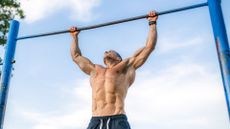 Build big arms and back muscles with this 5-minute pull up workout for beginners
Build big arms and back muscles with this 5-minute pull up workout for beginnersStruggling to get started with pull-ups? This fast workout will help you build strength (and arm/back size)
By Matt Kollat Published
